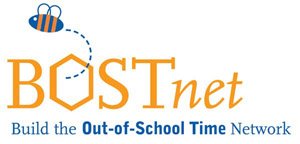This is a pivotal time for afterschool and out-of-school time (OST) programs in Boston and across Massachusetts. There is a growing recognition, substantiated by research, of the role OST plays in supporting the development of children and youth for success in education and in life. BOSTnet recently participated in the state’s After School and Out-of-School Time Commission, which elevated many of the issues affecting the field, including inconsistent funding, workforce development, and access. There is an increasing emphasis on program quality, the needs of children with disabilities, mental health supports, and services for older youth. We are beginning to find common ground in a youth development framework that covers the continuum from early care to school age and older youth programs. Advances in neuroscience research are also revealing that the developing brain has an enormous capacity to learn when nurtured. Moreover, there is a growing awareness of the importance of coordinating services to more children through more efficient systems. The question is no longer whether OST programs are necessary; instead, the question has shifted to how do we best develop and support high-quality programs and maintain a diversity of opportunities that serve the needs and interests of all children, youth and families.
Yet, it is clear challenges exist beyond the current economic crisis. As a recent report from the Wallace Foundation notes, “defining what a well-functioning, coordinated OST ‘system’ consists of – and how to plan, operate and sustain it – remains very much an early work in progress.” Although there is strong research that tells us what elements are important for a quality program, developing an infrastructure of funding and professional development to build and support quality programming remains elusive. There is also continued debate on how best to evaluate programs. While youth outcomes remain the standard benchmark for state, federal and private funders, many researchers and advocates in the field are pushing for more quality-based indicators. These could include elements such as strong leadership, intentional learning, staff development, family involvement, and participation rates. All of these indicators are linked to program quality. The thought is that if we evaluate programs on their ability to deliver quality at the point-of-service, we can stop holding them accountable for outcomes that are beyond their control. By focusing on quality, we have greater influence over the levers of change, including leadership development, staff practices, program culture (risk and innovation) and professional development systems.
The question of how best to evaluate OST programs is complicated by a lack of consensus about appropriate expectations for OST. When parents view afterschool as childcare they often utilize it inconsistently in response to periodic need. Moreover, reducing the basic function of afterschool to childcare excludes the role these programs play in healthy youth development. Viewing afterschool as an extension of the school day also limits the potential of the field. Focusing on academic achievement and structuring content in a school-like way can dilute the unique characteristics of afterschool that make it a valuable informal learning environment. It is also clear that a core asset of OST learning—fun—is often a missing ingredient not readily apparent to program staff. Fun is the foundation of sustained learning and engagement from early childhood onward. Fun supports an environment that nurtures inclusive, pro-social behaviors among children. Fun learning matters!
Ultimately, our goal is universal access to quality opportunities that build developmental assets in youth, including confidence, social-competence, positive identity, positive values and a commitment to learning and community. Research shows that children and youth who have a high level of these assets at any given time make better decisions, are engaged in their communities, are more resilient, and achieve more academically. For over twenty years, BOSTnet has worked to fulfill its mission to enhance the quality and increase the capacity of the out-of-school time field. However, we know that access to quality programs is not enough. As researchers are finding, positive youth outcomes are most directly related to participation in quality youth environments that are safe, supportive, interactive and engaging. Yet, we have very little data on participation rates or overall demand. Some research suggests that we really need to think of the long-term outcomes that are cumulative over time and linked to extended participation. As a recent study by Public/Private Ventures notes, short-term engagement has been shown to result in only short-term outcomes without any long-term impact on youth development. If quality and participation are the key drivers of outcomes, then we must address head-on the challenge of creating programming that appeals to children and youth of various ages with diverse interests.
Gov. Patrick Establishes Six Readiness Centers
16 years ago
